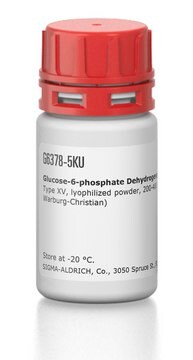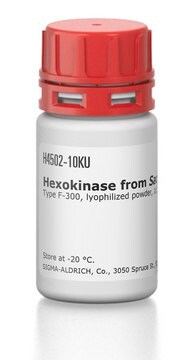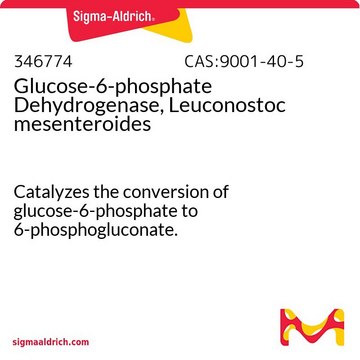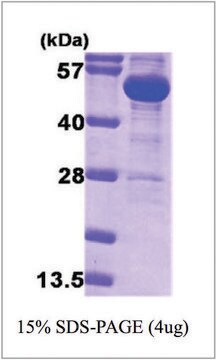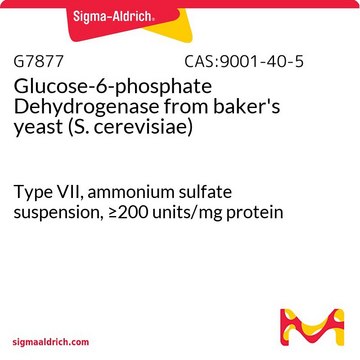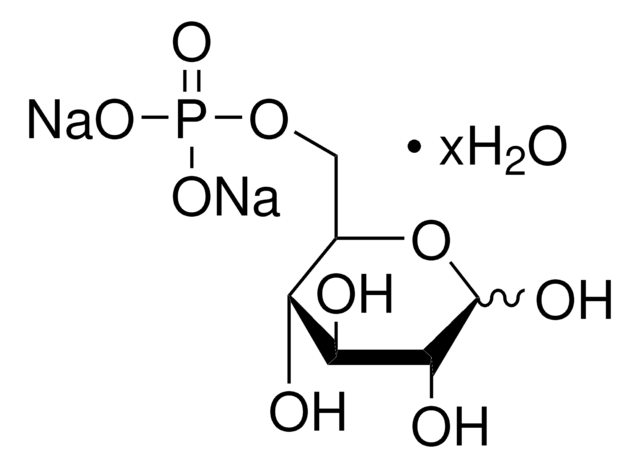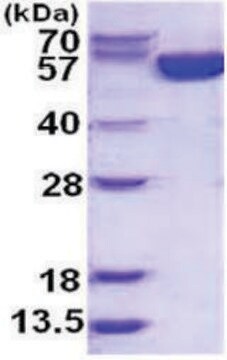G8529
Glucose-6-phosphate Dehydrogenase from Leuconostoc mesenteroides
recombinant, expressed in E. coli, lyophilized powder, ≥550 units/mg protein (biuret)
Sinonimo/i:
G-6-P-DH
About This Item
Prodotti consigliati
Ricombinante
expressed in E. coli
Livello qualitativo
Stato
lyophilized powder
Attività specifica
≥550 units/mg protein (biuret)
Composizione
Protein, 10-40% biuret
applicazioni
agriculture
Attività estranea
creatine phosphokinase, glutathione reductase, myokinase, NADH oxidase, NADPH oxidase, phosphoglucomutase, 6-phosphogluconic dehydrogenase, phosphoglucose isomerase, lactic dehydrogenase, hexokinase ≤0.01%
Temperatura di conservazione
2-8°C
Cerchi prodotti simili? Visita Guida al confronto tra prodotti
Applicazioni
- in the coupled spectrophotometric assay for PGI (F6P to G6P reaction)
- to study the starch time course using Nicotiana tabacum leaves
- to determine the glucose content in the root and stem samples of Quercus velutina Lam. saplings
- to assay glucose using a starch sample of wild-type and transgenic Arabidopsis whole seedlings
Azioni biochim/fisiol
Definizione di unità
Stato fisico
Codice della classe di stoccaggio
11 - Combustible Solids
Classe di pericolosità dell'acqua (WGK)
WGK 3
Punto d’infiammabilità (°F)
Not applicable
Punto d’infiammabilità (°C)
Not applicable
Dispositivi di protezione individuale
dust mask type N95 (US), Eyeshields, Gloves
Scegli una delle versioni più recenti:
Possiedi già questo prodotto?
I documenti relativi ai prodotti acquistati recentemente sono disponibili nell’Archivio dei documenti.
I clienti hanno visto anche
Protocolli
Enzymatic Assay of Glucose-6-Phosphate Dehydrogenase (EC 1.1.1.49)
Il team dei nostri ricercatori vanta grande esperienza in tutte le aree della ricerca quali Life Science, scienza dei materiali, sintesi chimica, cromatografia, discipline analitiche, ecc..
Contatta l'Assistenza Tecnica.
